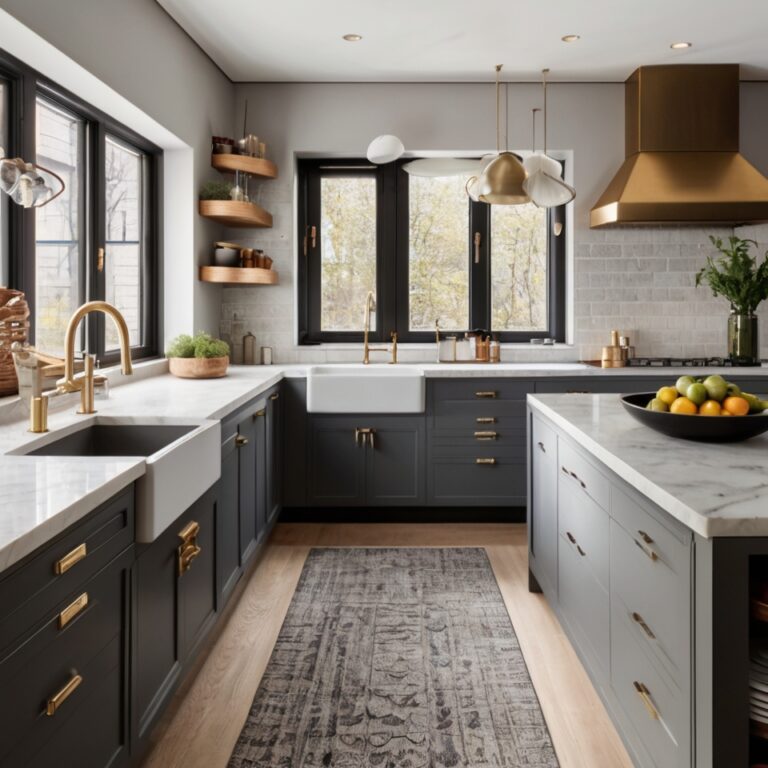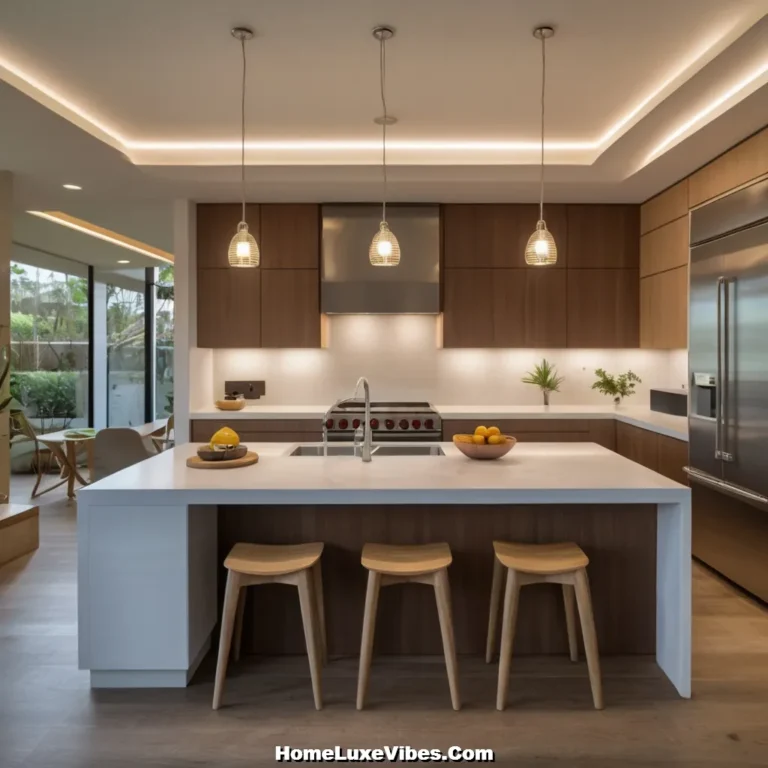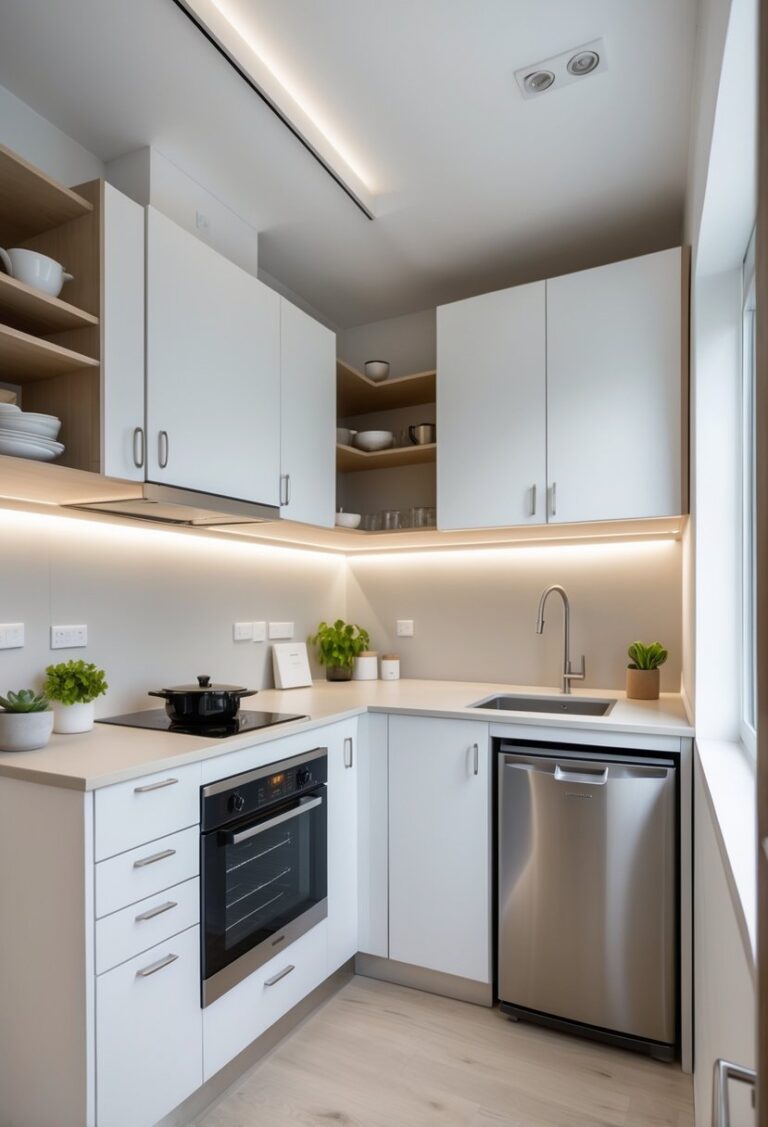14+ Japandi Style Kitchen Ideas for a Serene, Stylish Cooking Space
Japandi style combines the simplicity and functionality of Japanese design with the warmth and rustic charm of Scandinavian interiors. The result is a calming and stylish kitchen that embraces clean lines, natural materials, and a focus on functionality. If you’re looking to transform your cooking space, here are some Japandi-inspired kitchen ideas that will elevate your home.

What is Japandi Style?
Japandi style is a fusion of Japanese and Scandinavian aesthetics, creating a balance between form and function. It prioritizes minimalism, using neutral tones, natural textures, and a blend of modern and traditional design elements. This style embraces simplicity, creating a peaceful and clutter-free environment.

Layer Your Lighting:
Lighting is essential in Japandi kitchens to highlight the simplicity and functionality of the design. Consider incorporating a mix of task, ambient, and accent lighting to add warmth and depth to your kitchen. Pendant lights with clean, geometric designs or dimmable fixtures can create a cozy and inviting atmosphere.

Embrace the Wood Theme:
Wood is a signature element of Japandi style. Natural wood adds warmth and texture to your kitchen, balancing out cooler tones and creating a welcoming atmosphere. Opt for light wood finishes like oak or maple for a fresh, Scandinavian touch, or rich, dark woods like walnut for a more Japanese-inspired feel.

Bring in Stone for Texture:
Stone is an excellent way to add texture and contrast to a Japandi kitchen. Consider incorporating stone countertops, backsplashes, or flooring to create an earthy, grounded vibe. Materials like granite, marble, or slate bring an organic touch, complementing the clean lines and muted tones of the Japandi style.

Go Dramatic with All Black:
For those who love bold contrasts, an all-black kitchen can bring a modern and dramatic flair to Japandi design. Black cabinetry, countertops, or appliances can be balanced with light wood accents and neutral walls to maintain a harmonious, minimalist aesthetic. This design works best in spacious kitchens with plenty of natural light.

Incorporate a Large Plant:
A large indoor plant, such as a fiddle leaf fig or a snake plant, can add a natural element to your Japandi kitchen. Plants help soften the lines of minimalist design and contribute to a calming environment. Plus, the greenery adds life to the space, making it feel fresher and more inviting.

Focus on the Backsplash:
A well-chosen backsplash can elevate the entire kitchen design. In Japandi style, opt for simple, neutral materials like white subway tiles, textured stone, or smooth cement. A subtle, geometric pattern can add visual interest while staying true to the minimalist principles of the style.

Go All Out with Minimalism:
The core of Japandi design is minimalism—fewer, more purposeful pieces that focus on functionality. Keep countertops free of clutter, use hidden storage solutions, and choose appliances and tools that are sleek and unassuming. This minimalist approach not only keeps the space clean but also promotes a sense of calm and order.

Stick with Simple Lines:
Japandi style thrives on simplicity, and the use of clean, straight lines is central to the design. Whether it’s the cabinetry, countertops, or furniture, opt for pieces that feature smooth, unadorned surfaces. This creates a sense of harmony and balance, which is essential in Japandi interiors.

Hold Onto Consistent Details in Small Cooking Spaces:
If your kitchen is on the smaller side, focus on consistent design details that maintain the Japandi aesthetic. Keep colors neutral, use functional storage solutions, and prioritize clean lines and quality materials. This approach will make your space feel larger and more open, even if it’s compact.

Add Metallics for a Traditional Twist:
While Japandi style favors natural materials, adding a touch of metallics can provide a nod to traditional Japanese design. Brass or copper hardware on cabinets, faucets, or light fixtures can add warmth and elegance. The key is to keep these metallic elements subtle so they don’t overwhelm the space.

Center Minimalism Into Other Areas:
Japandi design isn’t confined to just the kitchen—extend the minimalist approach into adjacent rooms. Open shelving, subtle furniture, and simple décor throughout the home create a cohesive feel that ties the entire space together. This holistic approach ensures that each room complements the kitchen’s design.

Keep Patterns Consistent:
Patterns are typically kept to a minimum in Japandi style, with the emphasis on clean, uncluttered surfaces. However, using consistent patterns for textiles, such as kitchen towels, curtains, or rugs, can add a subtle depth to the design. Stick to simple, neutral patterns like stripes or checks to maintain the calm, serene atmosphere.

Match the Tone of Wood with Other Colors:
In Japandi style, color coordination is essential. To create a balanced space, ensure that the tones of your wood elements match or complement other colors in the kitchen. Light wood pairs well with whites, grays, and muted pastels, while dark wood works beautifully with black, charcoal, and deep greens.

Balance Black and White:
A black-and-white color scheme is a staple in Japandi kitchens. These contrasting colors create a visually striking yet balanced look. To avoid a harsh contrast, soften the effect with wooden accents or textured materials like stone, giving the kitchen warmth and depth.

Final Thoughts:
Japandi style offers a serene, functional, and stylish approach to kitchen design. By combining natural materials, minimalist décor, and calming colors, you can create a cooking space that feels both modern and timeless. Whether you’re embracing the wood theme, incorporating dramatic contrasts, or focusing on subtle details, these Japandi kitchen ideas will help you design a space that’s both beautiful and practical.








